Key Takeaways
1. The Universe Began in an Incredibly Tiny, Dense Point
In the beginning, nearly fourteen billion years ago, all the space and all the matter and all the energy of the known universe was contained in a volume less than one-trillionth the size of the period that ends this sentence.
Cosmic Genesis. The universe originated from an unimaginably small, incredibly dense point that rapidly expanded in what we call the Big Bang. This primordial moment represents the beginning of space, time, and all known matter, compressed into a state beyond our current understanding of physics.
Key characteristics of the early universe:
- Extreme temperature and density
- Fundamental forces were initially unified
- Rapid expansion occurred within fractions of a second
- Quantum mechanics and gravity were fundamentally intertwined
Theoretical Challenges. Scientists continue to grapple with understanding the precise mechanisms of the universe's birth, particularly during the Planck era—the first 10^-43 seconds after the beginning, where our current physical laws break down.
2. Matter and Energy Emerged from the Big Bang
These transmogrifications are entirely prescribed by Einstein's most famous equation: E = mc2, which is a two-way recipe for how much matter your energy is worth, and how much energy your matter is worth.
Particle Interactions. In the early universe, matter and energy constantly transformed, with particles and antiparticles spontaneously creating and annihilating each other. This dynamic process was governed by fundamental physical laws, particularly Einstein's equation relating mass and energy.
Fundamental particle families:
- Quarks
- Leptons
- Bosons
- Antimatter counterparts
Cosmic Asymmetry. A crucial moment occurred when matter slightly outnumbered antimatter by a billion-to-one ratio, allowing the universe to preserve matter instead of completely annihilating itself.
3. The Cosmic Microwave Background Reveals Our Cosmic Origins
The cosmic microwave background reveals the portal through which we all walked. It's a point where interesting physics happened, and where we learned about the universe before and after its light was set free.
Primordial Light. The cosmic microwave background (CMB) represents the earliest light that could travel freely through the universe, approximately 380,000 years after the Big Bang. This radiation provides a snapshot of the universe's early state and contains crucial information about its structure and evolution.
CMB Significance:
- Provides evidence for the Big Bang theory
- Reveals temperature variations in the early universe
- Helps scientists understand matter distribution
- Allows reconstruction of cosmic history
Scientific Discovery. The CMB was inadvertently discovered by Arno Penzias and Robert Wilson in 1964, transforming cosmology from speculative theory to precision science.
4. Dark Matter Holds Galaxies Together
Dark matter is our frenemy. We have no clue what it is. It's kind of annoying. But we desperately need it in our calculations to arrive at an accurate description of the universe.
Gravitational Mystery. Dark matter is an invisible substance that does not interact with light but exerts gravitational influence, providing the necessary gravitational "glue" that prevents galaxies from flying apart.
Dark Matter Characteristics:
- Comprises approximately 85% of cosmic matter
- Detected only through gravitational effects
- Not composed of ordinary atomic matter
- Crucial for galaxy and cluster formation
Ongoing Research. Scientists are actively searching for direct evidence of dark matter particles, using advanced particle accelerators and underground detection facilities.
5. Dark Energy is Driving the Universe's Expansion
Dark energy, a fundamental property of the cosmos, will, in the end, undermine the ability of future generations to comprehend the universe they've been dealt.
Cosmic Acceleration. Dark energy is a mysterious force causing the universe's expansion to accelerate, representing approximately 68% of the universe's total energy-mass content.
Key Implications:
- Contradicts previous assumptions about universal expansion
- Will eventually cause distant galaxies to become unobservable
- Represents a fundamental mystery in modern cosmology
Theoretical Challenges. Scientists are still struggling to understand the nature and origin of dark energy, with current theories suggesting it might be a quantum effect related to the vacuum of space.
6. Elements Are Forged in the Hearts of Stars
We are stardust brought to life, then empowered by the universe to figure itself out—and we have only just begun.
Stellar Alchemy. Most elements heavier than hydrogen and helium are created through nuclear fusion in stellar cores and dispersed through supernova explosions, making stars the universe's primary element factories.
Element Formation Process:
- Hydrogen and helium created during the Big Bang
- Heavier elements formed in stellar cores
- Complex elements produced during stellar explosions
- Distributed throughout galaxies by stellar winds and supernovas
Cosmic Recycling. Every atom in our bodies was once part of a star, emphasizing our fundamental connection to the cosmos.
7. Our Planet is Uniquely Positioned for Life
Earth formed in a kind of Goldilocks zone around the Sun, where oceans remain largely in liquid form.
Planetary Conditions. Earth's precise distance from the Sun, atmospheric composition, and chemical characteristics create an ideal environment for life's emergence and sustainability.
Life-Supporting Factors:
- Liquid water
- Moderate temperature range
- Protective atmosphere
- Carbon-based chemistry
- Complex molecular interactions
Potential for Extraterrestrial Life. The discovery of exoplanets suggests that similar conditions might exist elsewhere in the universe.
8. Invisible Light Reveals Hidden Cosmic Phenomena
We've come a long way since Herschel's experiments with rays that were "unfit for vision," empowering us to explore the universe for what it is, rather than for what it seems to be.
Electromagnetic Spectrum. Telescopes detecting various light wavelengths—radio, infrared, ultraviolet, X-ray, and gamma-ray—have dramatically expanded our understanding of cosmic phenomena.
Observational Advances:
- Detection of previously invisible cosmic events
- Insights into stellar formation and destruction
- Understanding of high-energy cosmic processes
Technological Evolution. Modern telescopes and detection systems allow scientists to "see" beyond visible light, revealing complex cosmic interactions.
9. We Are Fundamentally Connected to the Cosmos
We do not simply live in this universe. The universe lives within us.
Cosmic Interconnectedness. Humans are composed of elements created in stellar processes, sharing a fundamental chemical connection with the broader universe.
Philosophical Implications:
- Genetic links across species
- Shared atomic composition
- Cosmic perspective transcends individual experience
Humbling Perspective. Understanding our cosmic origins provides a more nuanced view of human significance and interconnectedness.
10. The Cosmic Perspective Transforms Human Understanding
Science is not just about seeing, it's about measuring, preferably with something that's not your own eyes, which are inextricably conjoined with the baggage of your brain.
Expanding Consciousness. The cosmic perspective challenges human-centric worldviews, encouraging broader, more inclusive understanding of existence.
Transformative Insights:
- Challenging cultural and personal biases
- Recognizing human limitations
- Promoting global and universal thinking
Intellectual Humility. Embracing the cosmic perspective requires acknowledging our collective ignorance while celebrating human curiosity and scientific discovery.
Last updated:
FAQ
What's "Astrophysics for People in a Hurry" about?
- Purpose and Audience: The book is designed for those who are too busy to read lengthy scientific texts but still want to understand the cosmos. It provides a concise introduction to astrophysics.
- Content Overview: It covers major ideas and discoveries in modern astrophysics, including the big bang, dark matter, dark energy, and the cosmic microwave background.
- Author's Expertise: Neil deGrasse Tyson, a renowned astrophysicist, aims to make complex scientific concepts accessible and engaging for the general public.
- Cultural Relevance: The book also touches on the increasing public interest in science, as evidenced by popular media and scientific festivals.
Why should I read "Astrophysics for People in a Hurry"?
- Quick Learning: The book offers a fast yet comprehensive overview of astrophysics, perfect for those with limited time.
- Cultural Literacy: It helps readers become culturally conversant in astrophysics, enhancing their understanding of the universe and their place in it.
- Engaging Style: Tyson's engaging writing style makes complex topics understandable and enjoyable, even for those without a scientific background.
- Broader Perspective: It encourages readers to think about the universe in a broader context, fostering a cosmic perspective on life.
What are the key takeaways of "Astrophysics for People in a Hurry"?
- Universe's Origins: The book explains the big bang theory and the early universe's rapid expansion and cooling.
- Dark Matter and Energy: It discusses the mysterious dark matter and dark energy, which make up most of the universe's mass-energy content.
- Cosmic Perspective: Tyson emphasizes the importance of understanding our place in the universe and how it can influence our worldview.
- Scientific Inquiry: The book highlights the ongoing quest for knowledge and the importance of scientific exploration in understanding the cosmos.
What are the best quotes from "Astrophysics for People in a Hurry" and what do they mean?
- "The universe is under no obligation to make sense to you." This quote underscores the complexity of the universe and the humility required in scientific inquiry.
- "We are stardust brought to life, then empowered by the universe to figure itself out—and we have only just begun." It highlights the connection between humans and the cosmos, emphasizing our role in understanding the universe.
- "In the end, the universe is not required to be in perfect harmony with human ambition." This reflects the idea that the universe operates independently of human desires and expectations.
- "The cosmic perspective flows from fundamental knowledge." This quote suggests that a deeper understanding of the universe can lead to a more profound perspective on life.
How does Neil deGrasse Tyson explain the Big Bang in "Astrophysics for People in a Hurry"?
- Initial Conditions: Tyson describes the universe's beginning nearly 14 billion years ago, with all matter and energy contained in a tiny volume.
- Rapid Expansion: The big bang led to a rapid expansion, with the universe cooling and forming basic particles and forces.
- Planck Era: He explains the Planck era, a time when gravity and quantum mechanics were unified, though not yet fully understood.
- Formation of Elements: The book details how the first elements, like hydrogen and helium, formed as the universe expanded and cooled.
What is dark matter, according to "Astrophysics for People in a Hurry"?
- Mysterious Substance: Dark matter is a form of matter that does not emit, absorb, or reflect light, making it invisible and detectable only through its gravitational effects.
- Massive Influence: It accounts for about 85% of the universe's total gravitational force, influencing the motion of galaxies and galaxy clusters.
- Unsolved Mystery: Despite its significant role, the exact nature of dark matter remains unknown, with ongoing research attempting to identify it.
- Theoretical Implications: Tyson discusses how dark matter challenges our understanding of physics and the need for new theories to explain it.
How does "Astrophysics for People in a Hurry" describe dark energy?
- Opposing Gravity: Dark energy is described as a mysterious force that acts opposite to gravity, causing the universe's expansion to accelerate.
- Cosmological Constant: Tyson revisits Einstein's cosmological constant, which was initially introduced to allow for a static universe but later found to explain the accelerating expansion.
- Dominant Force: Dark energy constitutes about 68% of the universe's total mass-energy content, making it the most significant component.
- Ongoing Research: The book highlights the scientific efforts to understand dark energy and its implications for the universe's future.
What is the cosmic microwave background, as explained in "Astrophysics for People in a Hurry"?
- Afterglow of the Big Bang: The cosmic microwave background (CMB) is the remnant radiation from the early universe, providing a snapshot of the universe 380,000 years after the big bang.
- Discovery and Significance: Tyson discusses its accidental discovery by Penzias and Wilson and its role in confirming the big bang theory.
- Temperature Variations: The CMB's slight temperature variations offer insights into the early universe's structure and the formation of galaxies.
- Cosmological Tool: It serves as a crucial tool for cosmologists to study the universe's history and composition.
How does "Astrophysics for People in a Hurry" address the concept of the multiverse?
- Beyond Our Universe: Tyson introduces the idea of the multiverse, suggesting that our universe might be one of many, each with its own physical laws.
- Theoretical Basis: The concept arises from modern cosmological theories and the improbability of our universe being unique.
- Philosophical Implications: The multiverse challenges our understanding of existence and our place in the cosmos, prompting philosophical and scientific discussions.
- Open-Minded Exploration: Tyson encourages readers to remain open to new ideas and discoveries that could reshape our understanding of the universe.
What role do exoplanets play in "Astrophysics for People in a Hurry"?
- Search for Life: Exoplanets, or planets orbiting stars other than the Sun, are central to the search for extraterrestrial life.
- Detection Methods: Tyson explains various methods for detecting exoplanets, such as monitoring star brightness and observing gravitational effects.
- Earth-Like Planets: The discovery of Earth-like exoplanets raises the possibility of finding habitable worlds and understanding planetary formation.
- Expanding Catalog: The book highlights the growing catalog of exoplanets and the potential for future exploration and discovery.
How does "Astrophysics for People in a Hurry" explain the universality of physical laws?
- Consistent Laws: Tyson emphasizes that the laws of physics are consistent throughout the universe, governing everything from subatomic particles to galaxies.
- Scientific Discovery: This universality drives scientific discovery, allowing us to apply known laws to understand distant cosmic phenomena.
- Implications for Life: The consistent laws suggest that any intelligent life elsewhere in the universe would operate under the same physical principles.
- Cultural Impact: Understanding these universal laws can influence our worldview and foster a sense of connection with the cosmos.
What is the cosmic perspective, according to "Astrophysics for People in a Hurry"?
- Broader View: The cosmic perspective involves understanding our place in the universe and recognizing the vastness and complexity of the cosmos.
- Humility and Insight: It encourages humility, as it reveals the smallness of human concerns in the grand scheme of things, while also providing insight into our interconnectedness with the universe.
- Cultural and Spiritual Impact: Tyson suggests that adopting a cosmic perspective can lead to cultural and spiritual growth, promoting peace and understanding.
- Ongoing Exploration: The book advocates for continued exploration and discovery, as the cosmic perspective is ever-evolving with new scientific insights.
Review Summary
Astrophysics for People in a Hurry receives mostly positive reviews for its accessible approach to complex topics. Readers appreciate Tyson's humor and ability to simplify difficult concepts. Some found it challenging or overwhelming, while others were inspired by the cosmic perspective. The book covers various astrophysics topics, from the Big Bang to dark matter. Many reviewers recommend it for those interested in space and science, though some suggest reading it slowly to fully grasp the content. Overall, it's praised for sparking curiosity and wonder about the universe.
Similar Books
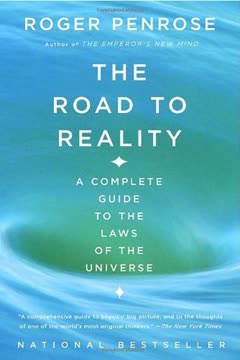


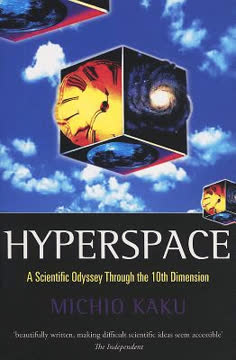
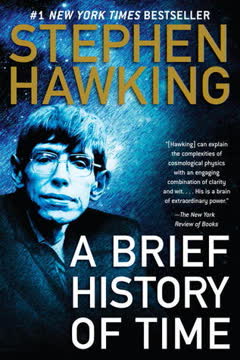
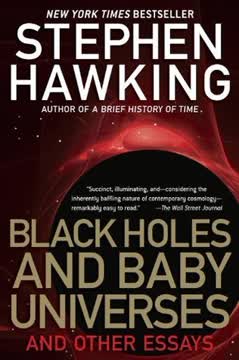

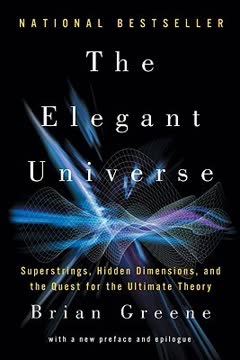

Download PDF
Download EPUB
.epub digital book format is ideal for reading ebooks on phones, tablets, and e-readers.









